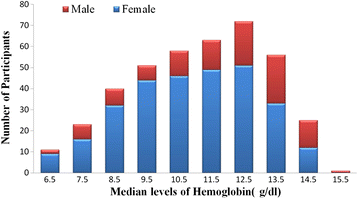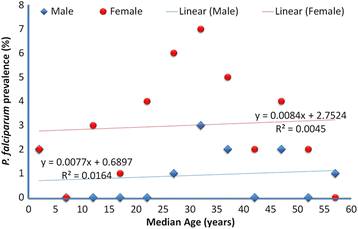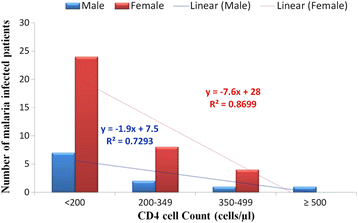The prevalence of malaria among HIV seropositive individuals and the impact of the co- infection on their hemoglobin levels
- PMID: 25857950
- PMCID: PMC4355357
- DOI: 10.1186/s12941-015-0064-6
The prevalence of malaria among HIV seropositive individuals and the impact of the co- infection on their hemoglobin levels
Abstract
Background: Malaria and HIV/AIDS are the two most common infections in sub-Sahara Africa. There are hypotheses and study reports on the possible association between these two infections, hence the prevalence and outcome of their co-infection in an endemic population will be important in defining healthcare strategies. A cross sectional study was carried out at the Holy Family Hospital in Techiman, Ghana, between November 2011 and January 2012, to determine the prevalence of malaria among HIV sero-positive patients and its impact on hemoglobin levels.
Method: A total of 400 HIV sero-positive participants (292 females and 108 males) aged between 1 and 73 years were randomly sampled for the study. A questionnaire was administered and 2 ml of venous blood samples were drawn for malaria parasites detection, CD4 count and haemoglobin level estimations.
Results: Malaria parasites were detected in 47 (11.75%) of the participants. There was no statistically significant difference between the malaria prevalence rate of females (12.1%) and males (10.2%) P = 0.6047. An overall anaemia prevalence of 67% was observed. Among participants with malaria the anaemia prevalence was 93.6%. The CD4 cell count of all the participants ranged between 3 and 1604 cells/μl with a mean of 386.2 (±274.3) cells/μl. Participants with malaria had CD4 cell count ranged 3 and 512 Cells/μl with the mean being 186.33 (±133.49) Cells/μl. Out of 377 participants (all above 15 years) interviewed on knowledge of malaria transmission and prevention, 87.0% had knowledge on transmission but only 8.5% use in bed nets.
Conclusion: It was revealed that almost all the patients with malaria infection were anemic.
Figures
References
-
- Huff B. HIV and malaria: Two intertwining epidemics’. Am Found Aids Res. 2000;6:1–5.
-
- World Health Organization . World Malaria Report. Geneva: WHO; 2012.
MeSH terms
Substances
LinkOut - more resources
Full Text Sources
Other Literature Sources
Medical
Research Materials





